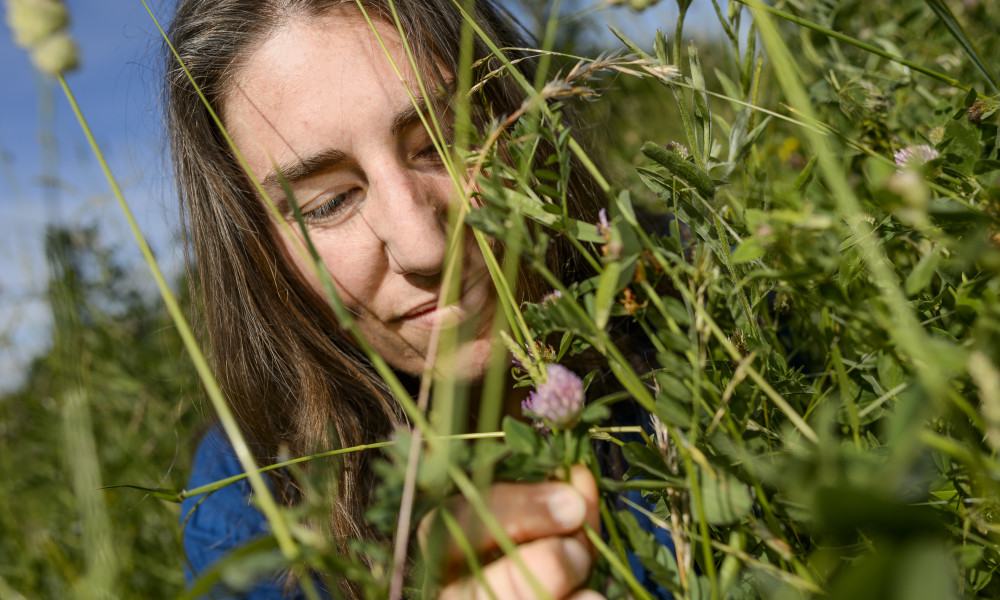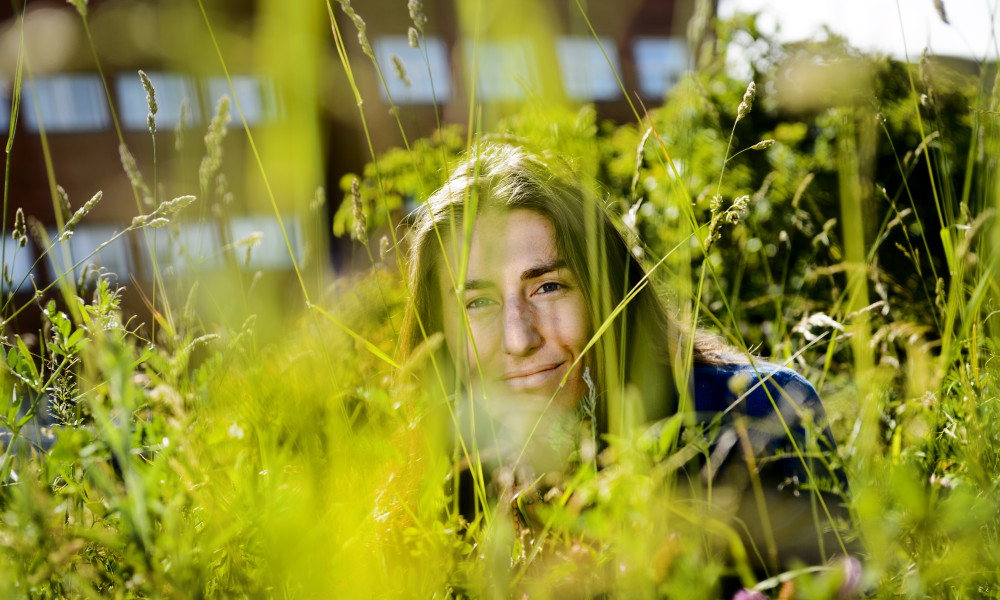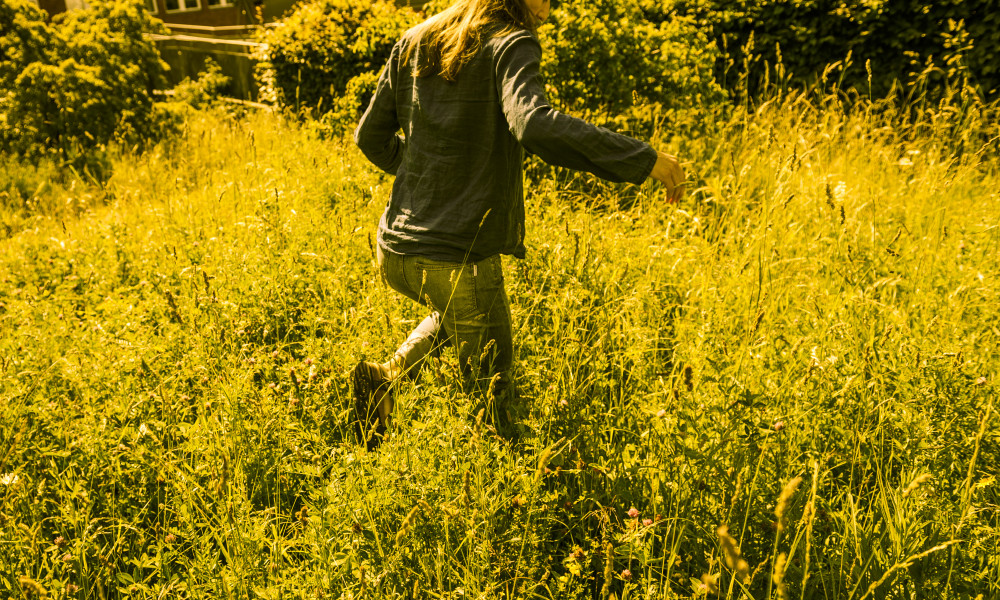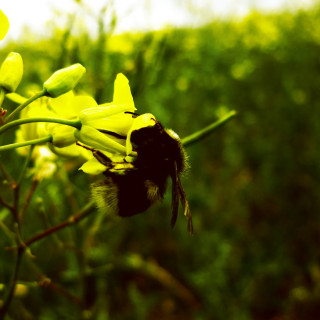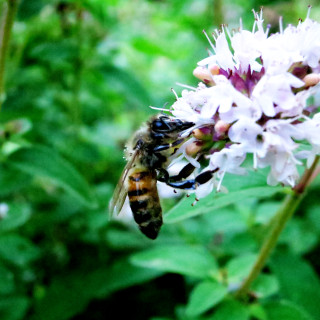Cities and bees – mutually dependent?
In a sustainable city, everyone is needed – including flowers, crops and bees. Perhaps it’s time to plan flowering meadows and green corridors into our cities, says Anna Persson, a researcher at the Department of Biology, Lund University.
Anna Persson and her colleagues in the Biodiversity and Conservation Science Group have studied how pollinating insects, primarily bees, are affected by their landscape. What we may not have considered is that the city is also a landscape where pollinating insects could thrive and where they could also be needed. How we construct a city affects biodiversity and this diversity in turn determines which ecosystem services, such as pollination, we can benefit from.
“We need a new way of planning cities”, says Anna Persson. “What people need often overlaps with what other organisms, such as bees, need.”
Why care about bees?
There are almost 300 species of bee (including 40 species of bumblebee) in Sweden and many species are endangered, explains Anna Persson. Researchers see that there are fewer and fewer bees, in particular in homogenous agricultural landscapes. This could be due to loss of habitat – fewer nesting places and smaller, poorer areas in which to find food – and to bee diseases.
“Urban meadows could also contribute more than simply biodiversity and a beautiful landscape.”
Reduced biodiversity among pollinating insects often leads to poorer pollination. Different species of bee complement one another because they have different modes of living, prefer different flowers, are active at different points in the season and have different sensitivities to wind and weather.
“The problem cannot be solved by simply setting up more bee hives for honeybees”, says Anna Persson. “In most environments, a variety of pollinators are needed.”
Cities of the future need pollinators
Even if more bees in cities is not the solution for the countryside pollination problems, a diversity of bee species in cities could help us with urban farming and local food production, but primarily with creating a pleasant and sustainable environment. In a sustainable city we need vegetation and green structures that can cope with future climate change. Anna Persson thinks sustainable park environments ought to have meadow areas, because this would benefit various species of pollinating insects.
“Urban meadows could also contribute more than simply biodiversity and a beautiful landscape. Showing how meadows are managed is also a part of cultural history. We could even extract bioenergy from the plant matter after the meadow has been cut”, says Anna Persson.
Planning for sustainable cities
In order to preserve a diversity of bee species, a diversity of environments is required. Besides finding food (pollen and nectar) from different types of flower, bees also have different preferences for where they build their nests. For example, bumblebees build their nests on or under the ground, in old voles’ nests, tufts of grass or moss, as well as in hollow trees and bird boxes. Solitary bees may need areas with open, sunny and sandy surfaces, gravelled ground or old wood with insect holes.
In cities, there are already unique environments such as parks, gardens, allotments, verges, derelict plots and industrial sites where bees can thrive. If Anna Persson got to decide, we would stop paving surfaces and tarmacking car parks, and instead show respect for and preserve green areas.
“Stop doing what we’ve always done and start thinking about what’s important”, urges Anna Persson. “See the city as a part of the landscape, bring in the natural landscape and integrate it into the city. Instead of planning each green area or garden individually, we should have a landscape perspective and make sure we establish green corridors that provide sufficient green spaces and food for all bees throughout the season.”
Text: Pia Romare
Photo: Kennet Ruona
Published: 2014
Facts
-
Pollination
-
Pollination is a very important process that enables plants to reproduce and survive. It is also a condition for production of many types of fruit and vegetables. Pollination is therefore an important ecosystem service that also has high economic value. Pollination is primarily performed by insects such as bumblebees, solitary bees and honeybees. The tens of thousands of species of bees that exist worldwide pollinate one third of our food.
-
Ecosystem services
-
The process of organisms interacting with their environment in a way that benefits human society (for example bees pollinating crops) is referred to as ecosystem services. Other similar examples are: plants absorbing nutrients from watercourses, ground-dwelling organisms that increase the soil’s water-retaining properties, and pest control using natural predators.
-
A report on biodiversity in urban environments
-
Together with others in the Biodiversity and Conservation Science Group, Anna Persson has placed her research in a broader context in a synthesis report on biodiversity in urban environments:
Persson & Smith 2014. Biologisk mångfald i urbana miljöer – förutsättningar, fördelar och förvaltning. CEC Syntes Nr 02. Centrum för miljö- och klimatforskning, Lunds universitet. ISBN 978-91-981577-2-7


